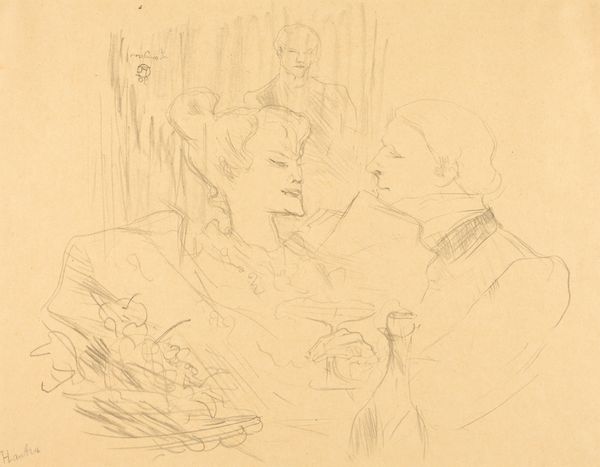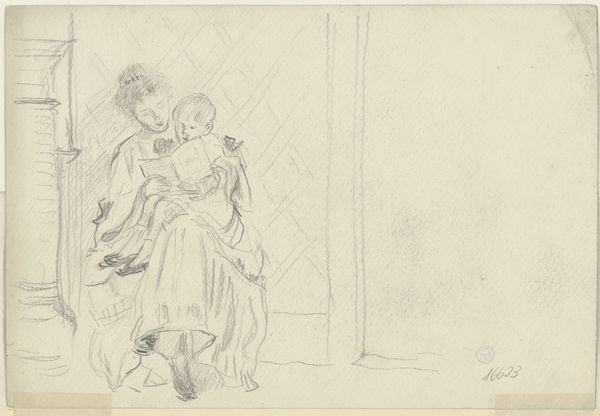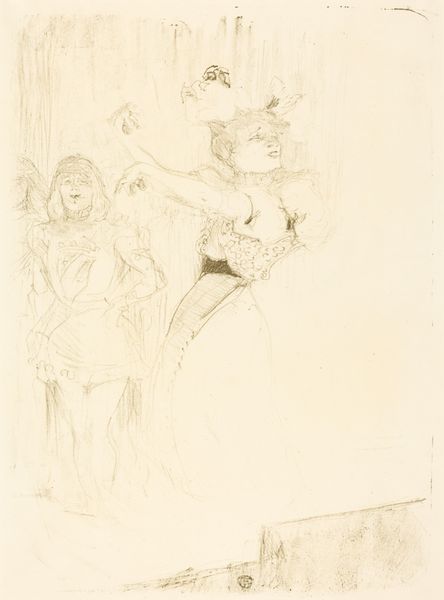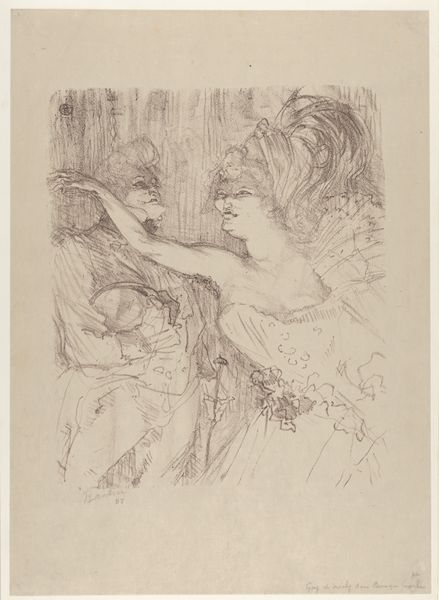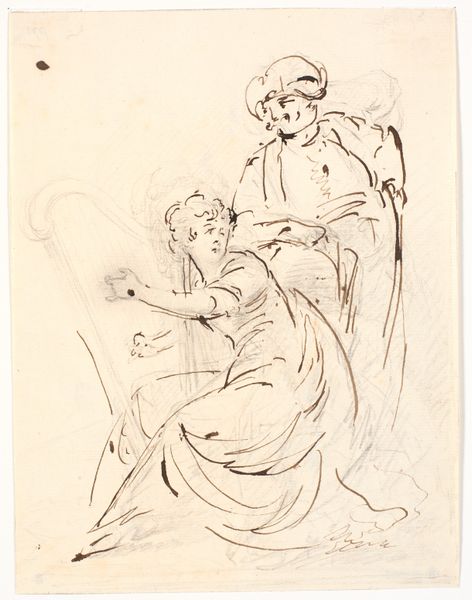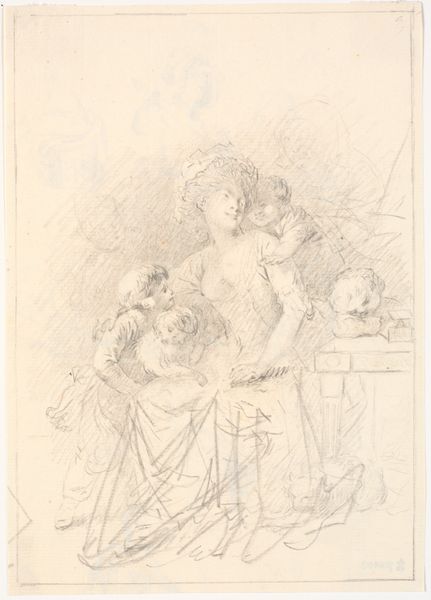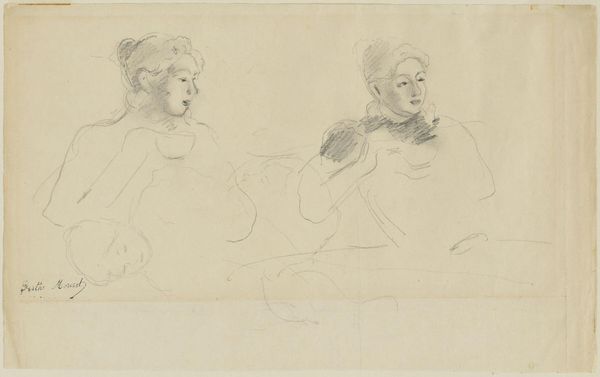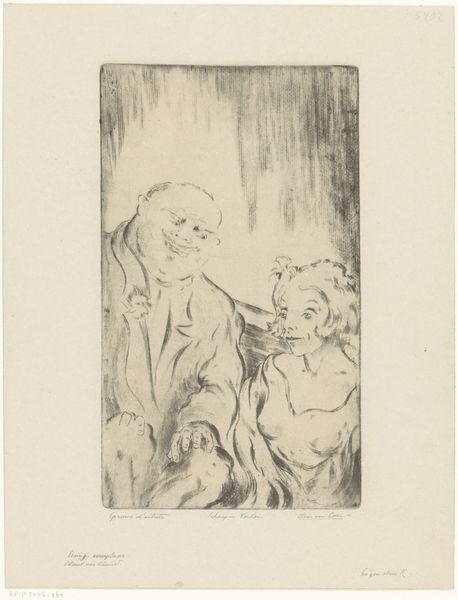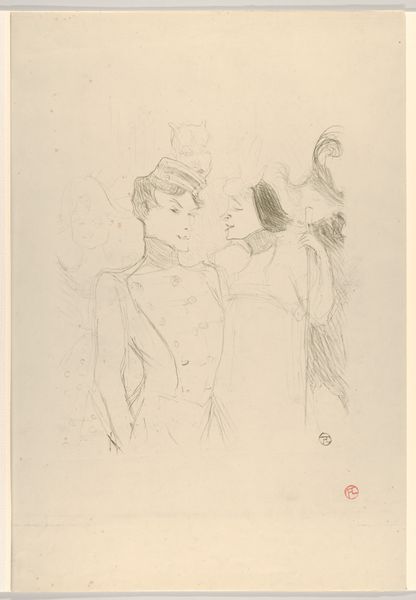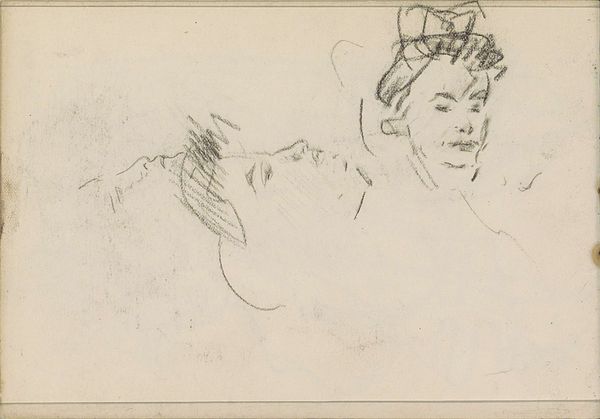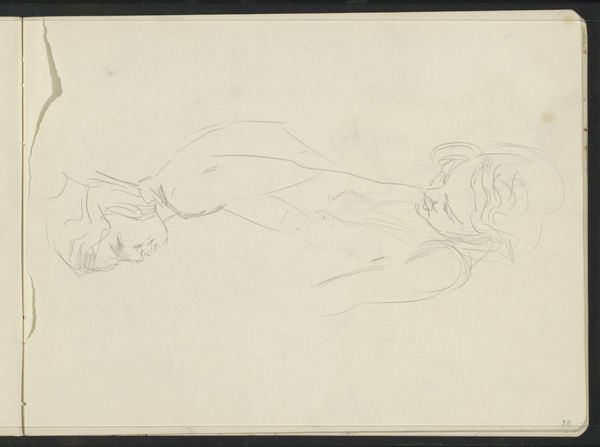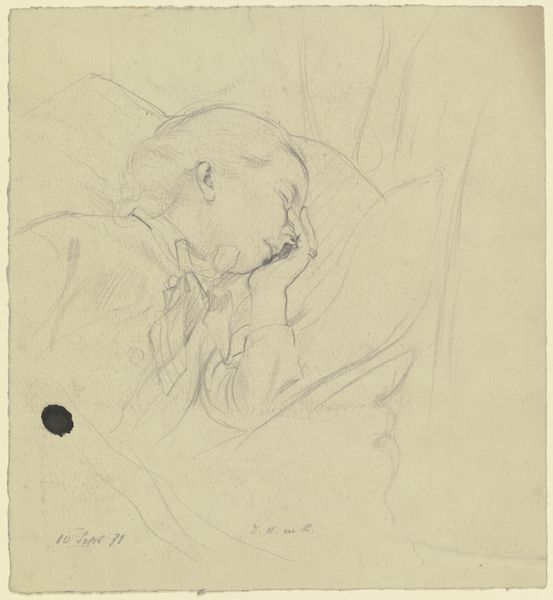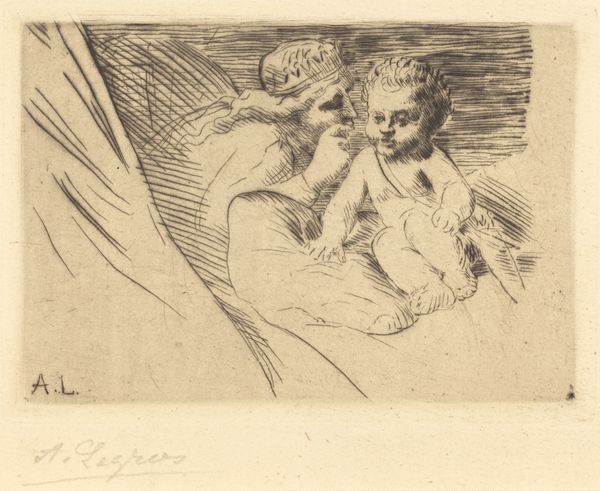
Dimensions: 13-3/8 x 18-1/2 in. (34.0 x 47.0 cm)
Copyright: Public Domain
Curator: A work brimming with the anxieties of modern life, Toulouse-Lautrec’s 1896 drawing, "Five O'Clock: Supper in London," presents us with a curious scene of diners caught in an oddly staged composition. What do you make of it? Editor: Well, initially, the sketch-like quality gives it an immediacy. The light gray strokes of the ink capture figures with remarkable economy. Despite the lack of strong tonal contrast, it possesses a subdued tension; is it intentional, or just an artefact of an unfinished process? Curator: The intentionality here hinges on grasping the zeitgeist. London in the 1890s was awash in both opulent wealth and abject poverty, mirrored, I believe, in this image's uneasy blend of the intimate and the aloof. Look at the way the figures interact, or pointedly *don’t*. It’s more a study of alienation than simple portraiture, right? Editor: Perhaps. I see, instead, the masterful manipulation of perspective and depth despite the minimalistic style. The placement of the figures and use of line weight draws the viewer into the central group—we are observers *and* participants. But is the meaning *inherent*, or derived from external knowledge about the artist? Curator: An intriguing question! And I think the visual symbolism certainly hints at both personal turmoil *and* broader social trends. Note, for instance, the central female figure, self-absorbed amidst all that is occurring. The period was all about self-analysis and societal self-examination, as psychological understanding seeped into cultural norms. It's not enough just to "see," but to truly *interpret* what is placed before our gaze, the past contained in visual shorthand. Editor: Even as the swift lines work well, their openness introduces ambiguity. To suggest that the lack of definitive detail conveys meaning—rather than reflecting speed and limited resource, may risk over-interpretation of visual signals. The artwork might simply be a passing snapshot or an experiment, which is also fair. Curator: Ah, but even such "simplicity," contains reverberations within our shared understanding. Thank you. It really enhances how to look at an artwork more closely to notice and recognize signs of time. Editor: A delightful dissection indeed; by emphasizing the materiality of an artwork, one can observe aspects easily overlooked with mere contextual awareness.
Comments
No comments
Be the first to comment and join the conversation on the ultimate creative platform.
